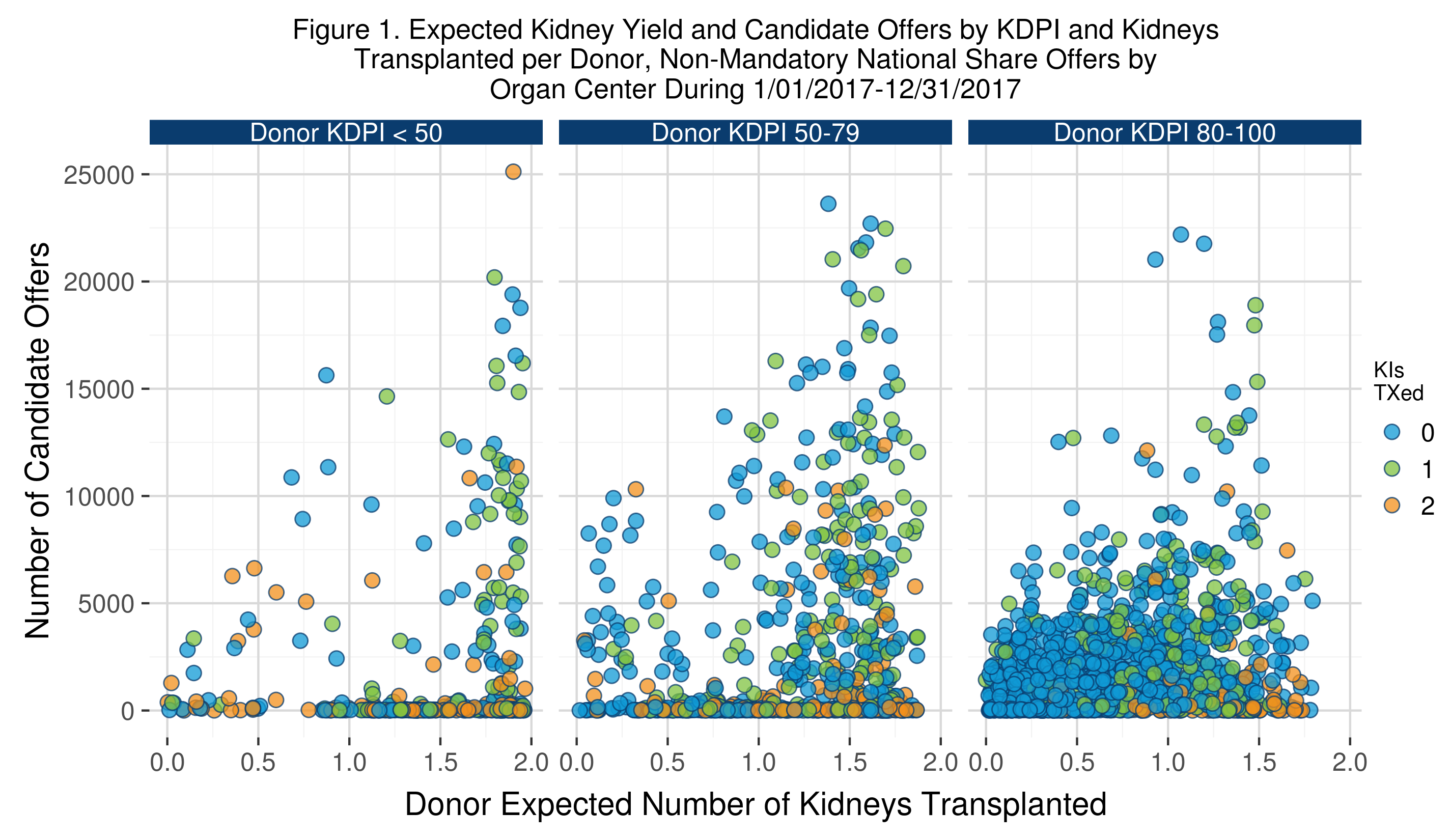Hard-to-Place Kidney Offers: Through the Lens of the United Network for Organ Sharing Organ Center
United Network for Organ Sharing, Richmond, VA
Meeting: 2019 American Transplant Congress
Abstract number: 217
Keywords: Donors, marginal, High-risk, Kidney transplantation, Resource utilization
Session Information
Session Name: Concurrent Session: Kidney Deceased Donor Allocation II
Session Type: Concurrent Session
Date: Monday, June 3, 2019
Session Time: 2:30pm-4:00pm
 Presentation Time: 3:42pm-3:54pm
Presentation Time: 3:42pm-3:54pm
Location: Ballroom B
*Purpose: In 2016, the rate of deceased donor kidney discard continued to increase to 20%. It is well documented that multiple factors contribute to lower organ transplant rates, including those related to donors, recipients, OPO practices, regulations, and logistics. While this has been considered and analyzed for the state of the community at large, an in-depth analysis of such matters relative to the UNOS Organ Center (OC) is yet to be seen.
*Methods: A one-year cohort of national share, points-based kidney offers by OC staff during January 1, 2017 through December 31, 2017 was considered. Mandatory national offers (for high CPRA and 0-mismatches) were excluded. Only offers for each match sent by OC staff were used. Analyses of level of effort and summary of donors provide a foundation for potential actionable solutions to increase organ utilization for these difficult-to-place kidneys. Associations are given by Pearson correlation coefficients.
*Results: During the year period, OC staff worked on 2,174 kidney matches with national, points-based offers. On average, 41 centers were offered to per match by OC staff; about 47% of matches had over 1,000 candidate-level offers. The median donor KDPI was 80 and 43% of donors had KDPI 85 or higher. Just over 50% of donors had an expected kidney yield, derived from the SRTR organ yield model, of at least one. Only 28% of these matches resulted in at least one kidney placed by OC staff. Figure 1 illustrates the number of candidate offers by donor expected kidney yield in relation to donor KDPI and the actual number of kidneys transplanted. The observed patterns correspond to a weak positive association (r=0.20, p<0.001) and no significant association (r=-0.004, p=0.85) between number of candidate-level offers per match and expected kidney yield and KDPI, respectively. There was a moderately negative correlation between KDPI and expected kidney yield (r=-0.55, p<0.001).
*Conclusions: The Organ Center works with a large cohort of difficult-to-place kidneys, providing a unique opportunity to consider improved placement to allow more efficient allocation progression and improved organ utilization. Not only are high-KDPI donors a large portion of the OC’s portfolio, but they are also coming to the OC after being offered and refused at both the local and regional level and less than half of these donors have an expected kidney yield less than one. This cohort proves a suitable subset of organs for defining parameters to identify and refine a systematic approach to expand to the community as a whole, focusing on increasing placement of these difficult-to-place kidneys.
To cite this abstract in AMA style:
Noreen SM, Brown RS, Lane M, Wolford B, Humphries CA. Hard-to-Place Kidney Offers: Through the Lens of the United Network for Organ Sharing Organ Center [abstract]. Am J Transplant. 2019; 19 (suppl 3). https://atcmeetingabstracts.com/abstract/hard-to-place-kidney-offers-through-the-lens-of-the-united-network-for-organ-sharing-organ-center/. Accessed December 19, 2025.« Back to 2019 American Transplant Congress

